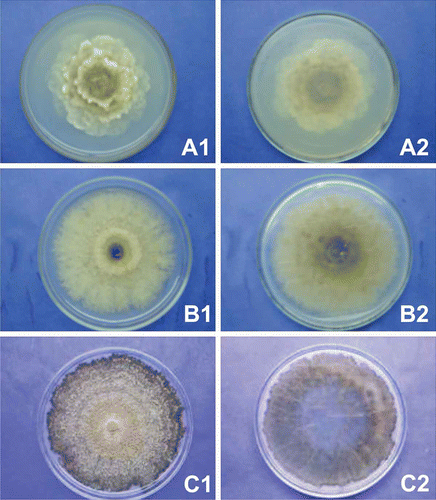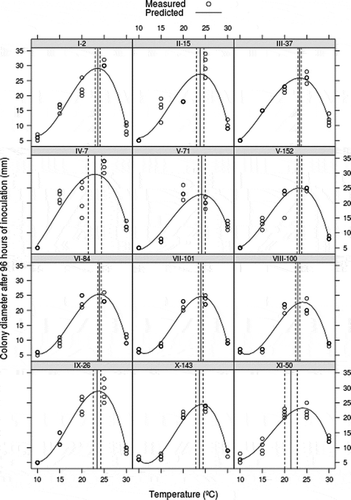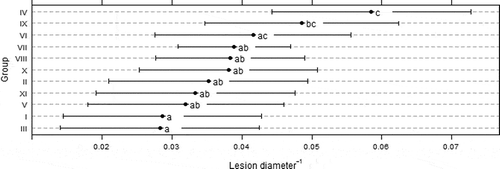Figures & data
Fig. 1. Macro-morphological features for identification of Monilinia spp. isolates. Colonies after 10 days of incubation at 22 ºC and 12 h light regime on acidified potato dextrose agar. A, Monilinia laxa – isolate number 15. B, Monilinia fructicola – isolate number 50.C, Monilinia fructigena – isolate number 152. (1) upper colony surface, (2) underside of colony.

Table 1. Assignment of synoptic key letters to Monilinia isolates identification based in macro-morphological features.
Fig. 2. Growth interval and optimum growth temperature for Monilinia spp. separated in groups based on macro-morphological characteristics and on the cubic model adjusted. Mycelial growth was assessed after 4 days of growth at 10 °C, 15 ° C, 20 ° C, and 25 ° C with 12 h light regime. Arabic and Roman numerals indicate isolates and macro-morphological groups, respectively.

Fig. 3. Growth interval and optimum growth temperature for Monilinia spp. separated by isolates and based on the cubic model adjusted. Mycelial growth was assessed after 4 days of growth at 10 ° C, 15 ° C, 20 ° C, and 25 ° C with 12 h light regime. Arabic and Roman numerals indicate isolates and macro-morphological groups, respectively.

Fig. 4. Pathogenicity of Monilinia spp. isolate groups. Lesion growth was assessed after 4 days of incubation at 22 ° C with 12 h light regime. Different letters correspond to significant differences of means (P > 0.05) based on false discovery rate test.

